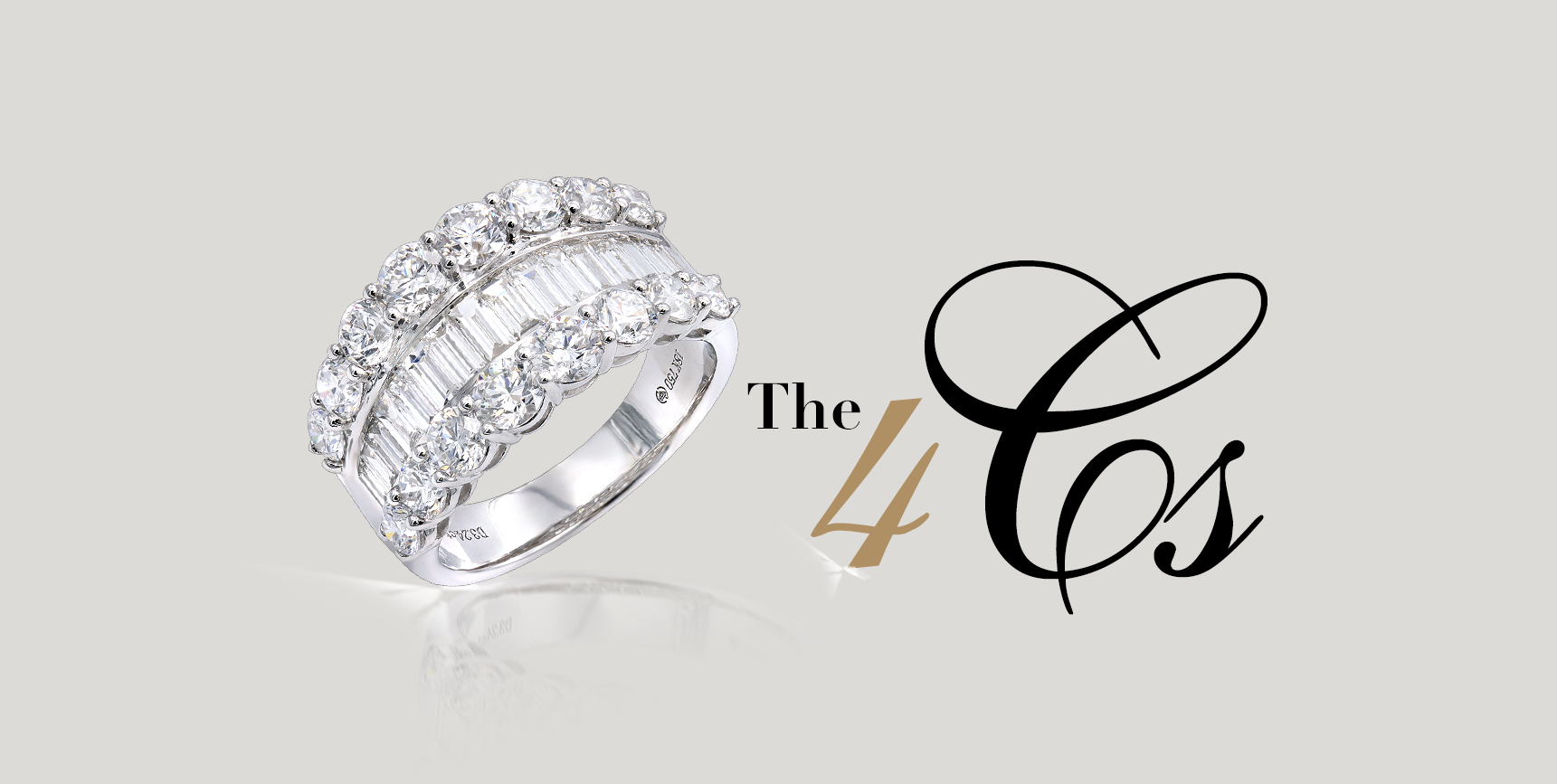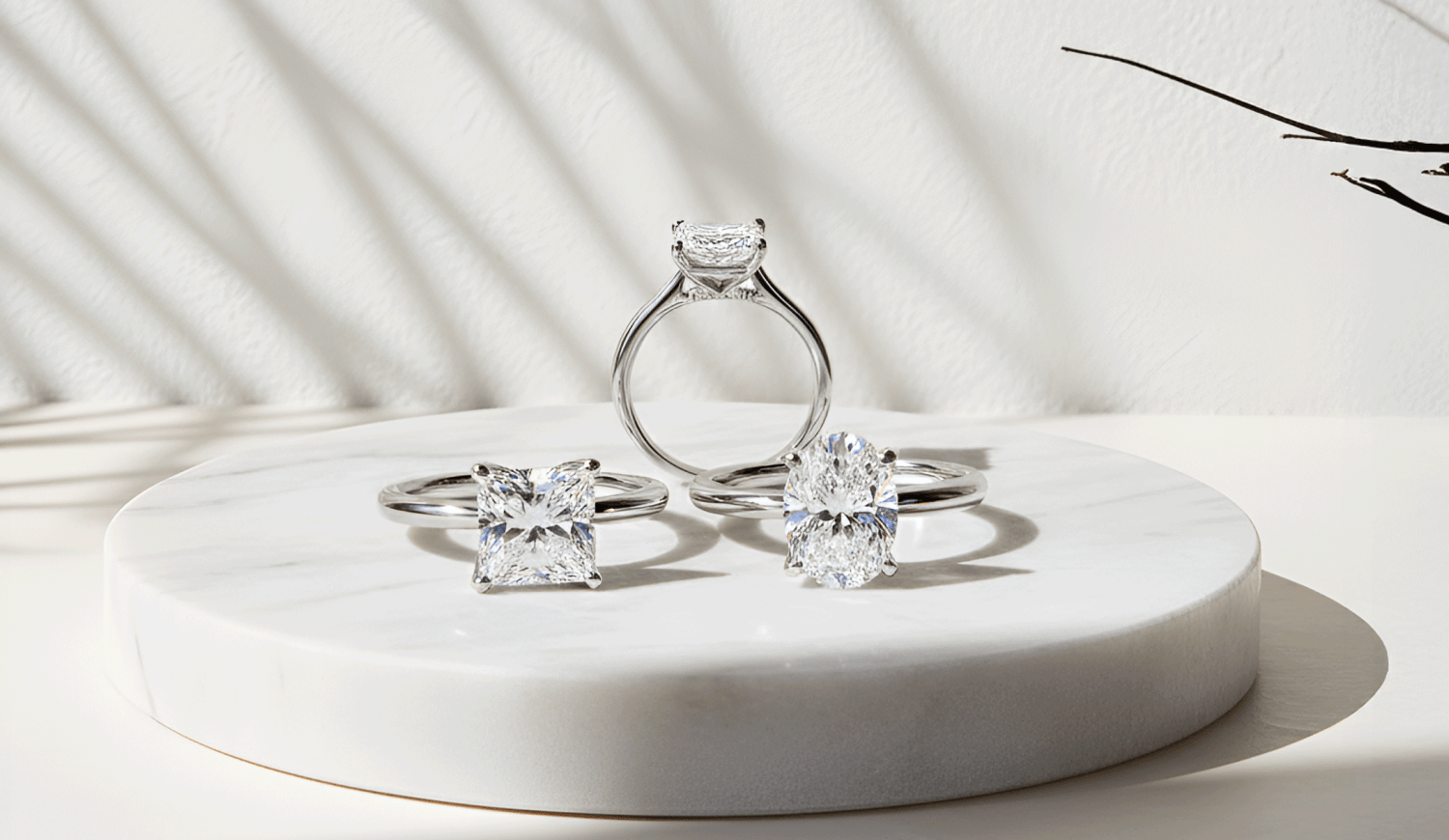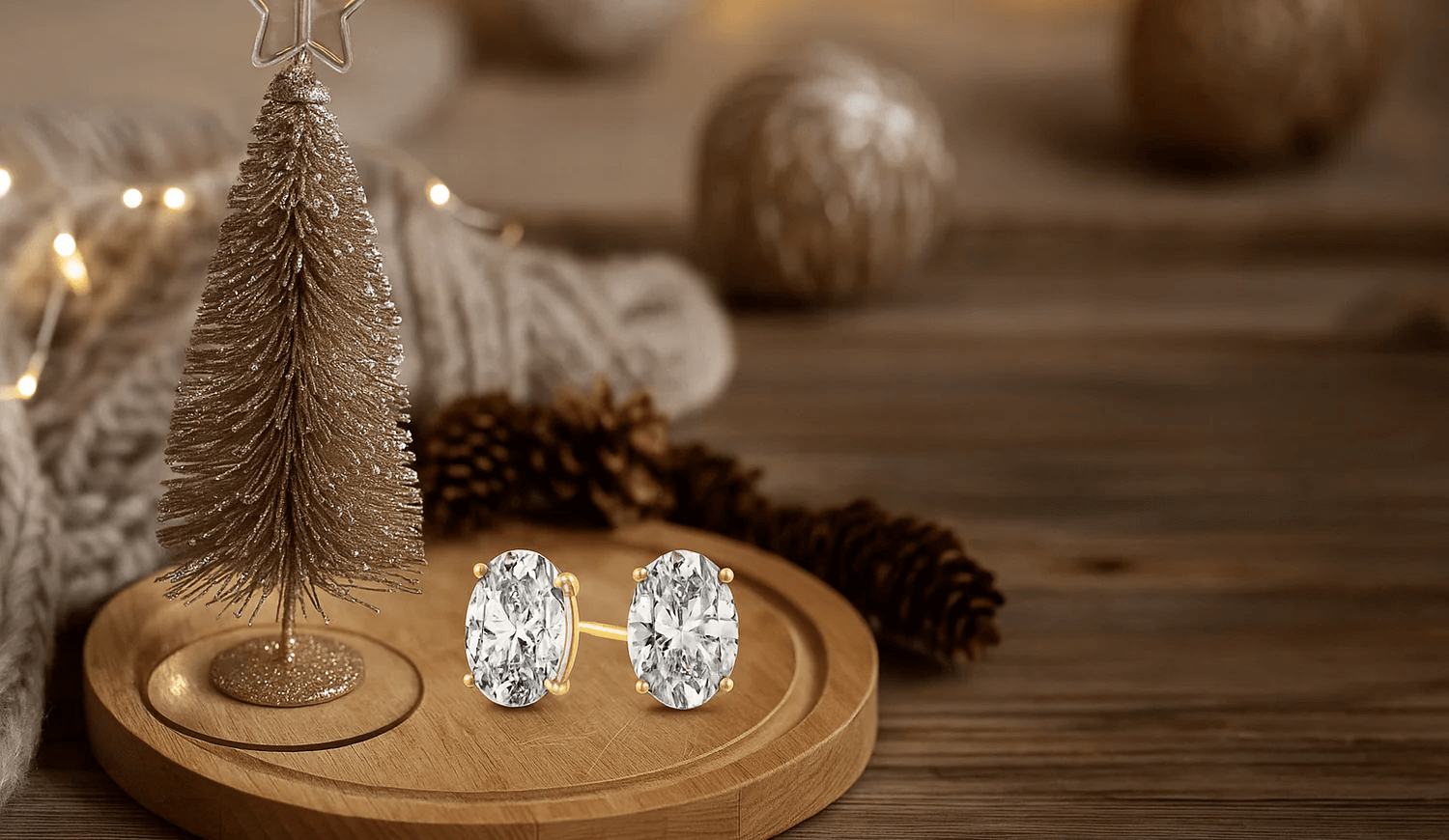The most important aspect of a diamond is the cut. The right cut can make even a lower color or clarity diamond sparkle like a star. Although there is a lot of science behind a diamond, there is also a matter of taste and individual perception of what makes a diamond beautiful. While not everyone will share the same opinion as to what constitutes beauty, most people do want a diamond that expresses their individual taste and personality. We are your local jewelry experts in helping you find the best quality diamond at the best possible price.
How to Choose the Best Diamond
Here’s what you should consider before making a purchase: Diamond Cut, Diamond Color, Diamond Clarity, and Carat Weight. These are known as the 4Cs of diamond grading. To see a full explanation of each of the 4Cs, click on the characteristic you wish to learn more about.
The information on this site was aggregated from the education section of the Gemological Institute of America’s website and the American Gemological Society website
COLOR
Like the Cut grade, the laboratory reports come with alphanumeric and verbal descriptors for Clarity. Again, international standards are used.
The verbal descriptors are trade terms originally developed to describe diamonds for diamond manufacturers and retailers. Over time, these terms have become recognized at the consumer level as well, and because they are widely accepted, we adhere to them, too.
The Grades are from highest to lowest in Clarity quality as follows:
- Flawless/Internally Flawless (F/IF) — Very rare for diamonds!
- Very, Very Slightly Included (VVS1 and VVS2) — Also very rare.
- Very Slightly Included (VS1 and VS2)
- Slightly Included (SI1 and SI2)
- Included (I1, I2, and I3)
CLARITY
Like the Cut grade, the laboratory reports come with alphanumeric and verbal descriptors for Clarity. Again, international standards are used.
The verbal descriptors are trade terms originally developed to describe diamonds for diamond manufacturers and retailers. Over time, these terms have become recognized at the consumer level as well, and because they are widely accepted, we adhere to them, too.
The Grades are from highest to lowest in Clarity quality as follows:
- Flawless/Internally Flawless (F/IF) — Very rare for diamonds!
- Very, Very Slightly Included (VVS1 and VVS2) — Also very rare.
- Very Slightly Included (VS1 and VS2)
- Slightly Included (SI1 and SI2)
- Included (I1, I2, and I3)
CUT
A Cut Grade Like No Other
You’ve probably heard that the most important factor of the 4Cs is Cut. We present this information to you based on the easy-to-understand numeric and verbal descriptors.
Easy-to-Understand Grades
The grades in diamond grading reports for a diamond’s cut are based on proprietary numeric and verbal descriptors. The numeric descriptors for the diamond Cut Grade follow the international standards for how well a diamond is cut. When reviewing the cut qualifications, it’s pretty easy to see which is best — no guessing what it all means!
CARAT WEIGHT
The carat is the unit of measurement for the physical weight of diamonds. One carat equals 0.200 grams or 1/5 gram and is subdivided into 100 points. For comparison, in units more familiar in the United States, one carat equals 0.007-ounce avoirdupois.
Carat Weight is the most objective of the diamond’s 4Cs. It involves no estimates, comparisons, or judgments. All that is required is a precisely balanced scale capable of measuring extremely small weights. Carat Weight is measured using a digital scale. Despite the ease of measurement and the relative unimportance of diamond weight, there are some facts you should understand about a diamond’s weight and price.
Comparing the value of diamonds by Carat Weight is like comparing the value of paintings by size. A wall-sized canvas by an unskilled artist may be bigger than a miniature by Rembrandt, but it will not be worth more. Large diamonds are rarer than smaller ones, and as the carat weight increases, the value of the diamond increases as well. However, the increase in value is not proportionate to the size increase.
For example, a one-carat diamond will cost more than twice that of a ½-carat diamond (assuming Color, Clarity, and Cut grade are the same). Weight does not always enhance the value of a diamond, either. Two diamonds of equal weight may be unequal in value, depending upon other determining factors such as Cut, Color, and Clarity. In fact, if a diamond is improperly cut, the added weight may serve only to reduce its brilliance.
For these reasons, you should consult us regarding the weight, quality, and value of a particular diamond. The best way to see the difference in weight versus cut is to look at a national grading laboratory’s “perfectly cut” diamond and compare it to the others. You will see a noticeable difference.





